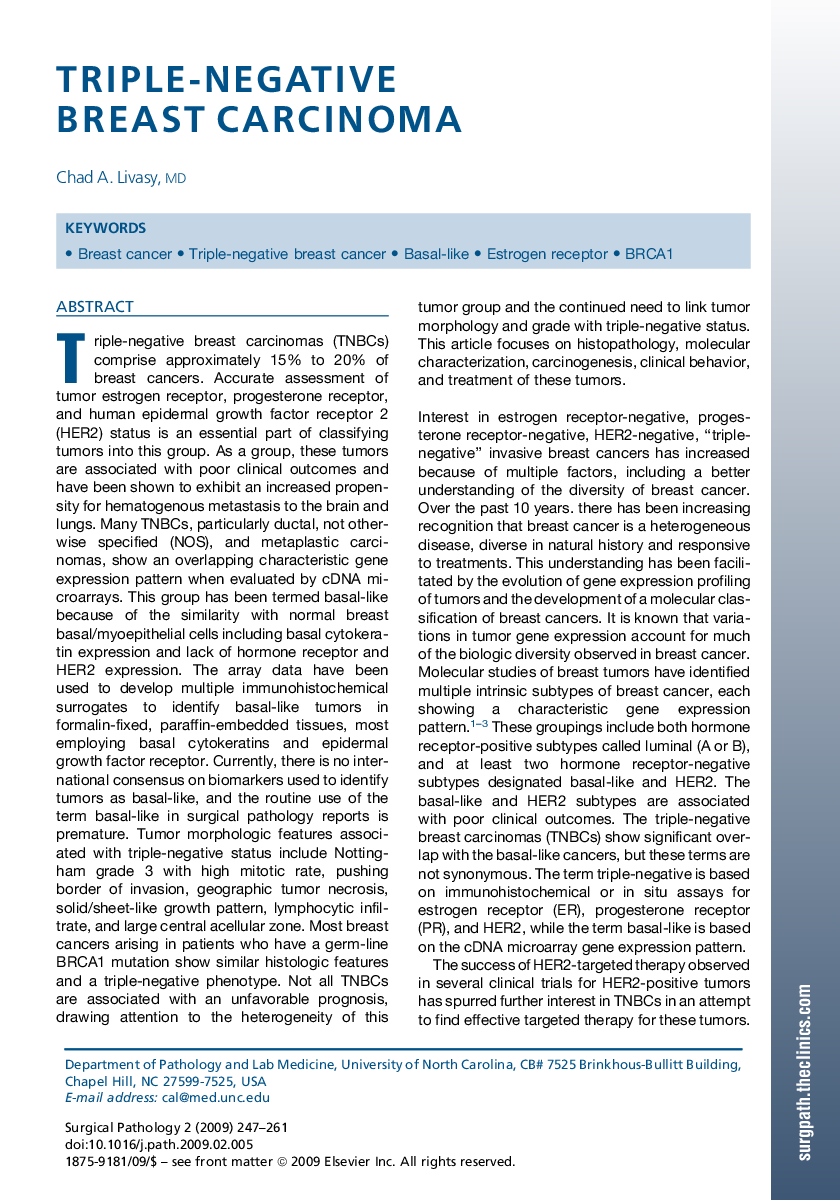| Article ID | Journal | Published Year | Pages | File Type |
|---|---|---|---|---|
| 3334631 | Surgical Pathology Clinics | 2009 | 15 Pages |
Triple-negative breast carcinomas (TNBCs) comprise approximately 15% to 20% of breast cancers. Accurate assessment of tumor estrogen receptor, progesterone receptor, and human epidermal growth factor receptor 2 (HER2) status is an essential part of classifying tumors into this group. As a group, these tumors are associated with poor clinical outcomes and have been shown to exhibit an increased propensity for hematogenous metastasis to the brain and lungs. Many TNBCs, particularly ductal, not otherwise specified (NOS), and metaplastic carcinomas, show an overlapping characteristic gene expression pattern when evaluated by cDNA microarrays. This group has been termed basal-like because of the similarity with normal breast basal/myoepithelial cells including basal cytokeratin expression and lack of hormone receptor and HER2 expression. The array data have been used to develop multiple immunohistochemical surrogates to identify basal-like tumors in formalin-fixed, paraffin-embedded tissues, most employing basal cytokeratins and epidermal growth factor receptor. Currently, there is no international consensus on biomarkers used to identify tumors as basal-like, and the routine use of the term basal-like in surgical pathology reports is premature. Tumor morphologic features associated with triple-negative status include Nottingham grade 3 with high mitotic rate, pushing border of invasion, geographic tumor necrosis, solid/sheet-like growth pattern, lymphocytic infiltrate, and large central acellular zone. Most breast cancers arising in patients who have a germ-line BRCA1 mutation show similar histologic features and a triple-negative phenotype. Not all TNBCs are associated with an unfavorable prognosis, drawing attention to the heterogeneity of this tumor group and the continued need to link tumor morphology and grade with triple-negative status. This article focuses on histopathology, molecular characterization, carcinogenesis, clinical behavior, and treatment of these tumors.
